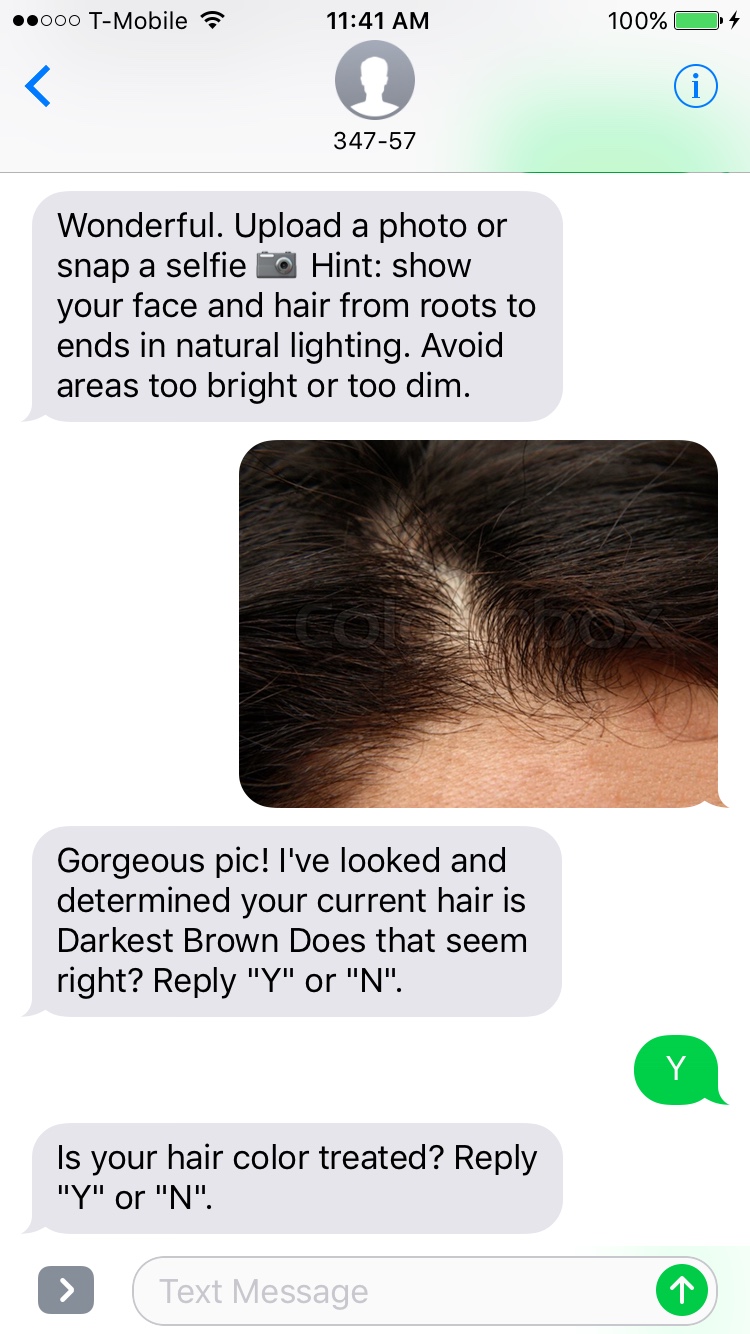Save 50% on a 3-month Digiday+ membership. Ends Dec 12.

Want to find the right hair color? Just ask Madi.
Hair color brand Madison Reed created the color-recognition chatbot to consult like a human colorist would do in a salon. When a customer texts “Hello” to Madi at 34757, she will ask for a selfie that shows the person’s face and hair from roots to ends in natural lighting. Then, Madi will analyze the photo, ask the guest questions, such as, “Have you got any gray hair?” and if the guest would like lighter or darker as the current hair color, and recommend the right color accordingly.
Madi is the most recent example of how an in-house engineering team of 15 at Madison Reed is tackling artificial intelligence to improve customer experience. Aside from chatbots, the team has developed an algorithm to send notifications, messages and emails to customers based on how often they dye their hair and the right color.

The engineering team at Madison Reed has grown from “a handful of people” to 15 since 2014. Its biggest project is its color-matching algorithm. When a shopper visits Madison Reed’s website for the first time, they can build a hair profile by taking a hair color quiz and answering questions like, “What are you looking to do with your hair?” and “How light or dark is your natural hair color?”
Madison Reed has over 2.5 million “hair profiles.” Based on that data, the hair color brand is able to do pretty accurate targeting, suggest products and refine product recommendation based on consumer feedback, said Amy Errett, CEO for Madison Reed.
For instance, from March to early April of this year, the company ran a pre-sale campaign to promote its new two-week fix for gray roots with a select group of shoppers who the algorithm thought may like the product. Then Madison Reed adjusted those shoppers’ preferences based on if they ended up making a purchase and other product feedback.
One big challenge in applying AI to retail is having enough data to train the AI algorithms, said Dave King, chief technology officer for Madison Reed. “In our case, it was images, selfies in particular, and we needed to have them for all ranges of hair color,” he said. “We had a treasure trove from [social data] and leveraged a huge catalog of images from our product testing and model program.”
The biggest hurdle in bringing photo recognition in to a chatbot like Madi is balancing speed and accuracy. King’s team used thousands of images to train the algorithm and reviewed the results with professional colorists to ensure an accurate match. Madi can reach an accuracy rate of around 85 percent, according to Madison Reed.
“If the machine isn’t sure of a color match, Madi will politely ask for another shot in different lighting or a different angle,” said King.
Retailers’ decisions to build tech in-house are typically driven by providing better customer experience and being able to make decisions based on data rather than intuition, said Paulo Sampaio, data scientist for research firm Edited.
“Maintaining an in-house data team and the entire infrastructure can become quite costly, which means that not all retailers are equipped to use data and new technologies to their full potential,” said Sampaio. “Unless this is taken care of, retailers might be better off to stick to their core business and leave data and analytics services to external providers.”
Homepage image courtesy of Madison Reed.
More in Marketing

‘We just did the math’: The new baseline for ad tech transparency
Ad execs said the industry is shifting toward a renewed transparency push driven as much by day-to-day operational pressure as by principle.

In Graphic Detail: Here’s what the creator economy is expected to look like in 2026
Digiday has charted its expected revenue, key platforms for creator content as well as what types of creators brands want to work with.

Ulta, Best Buy and Adidas dominate AI holiday shopping mentions
The brands that are seeing the biggest boost from this shift in consumer behavior are some of the biggest retailers.





